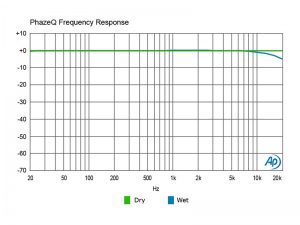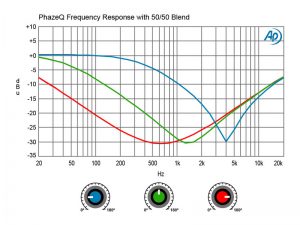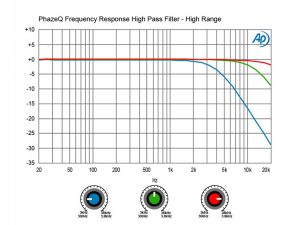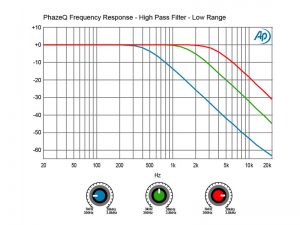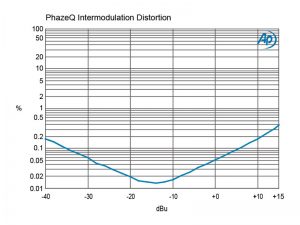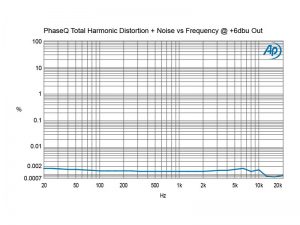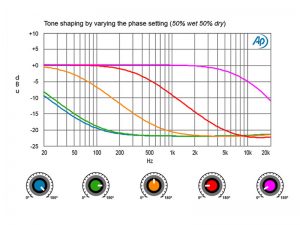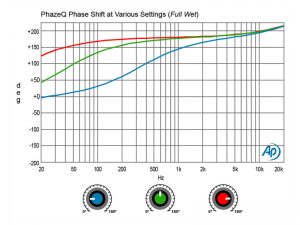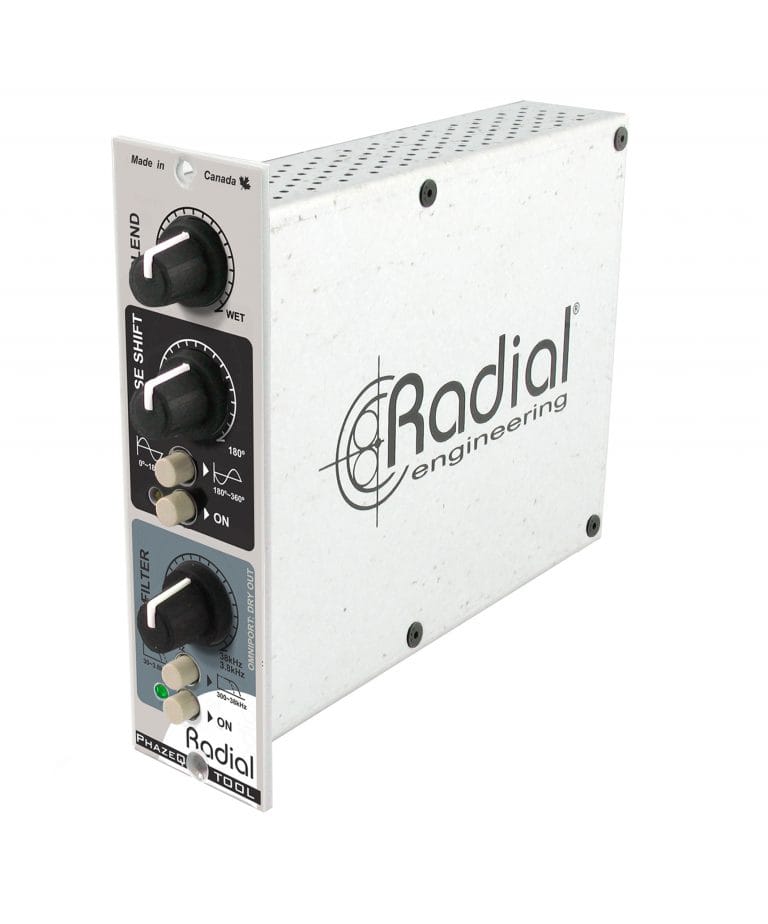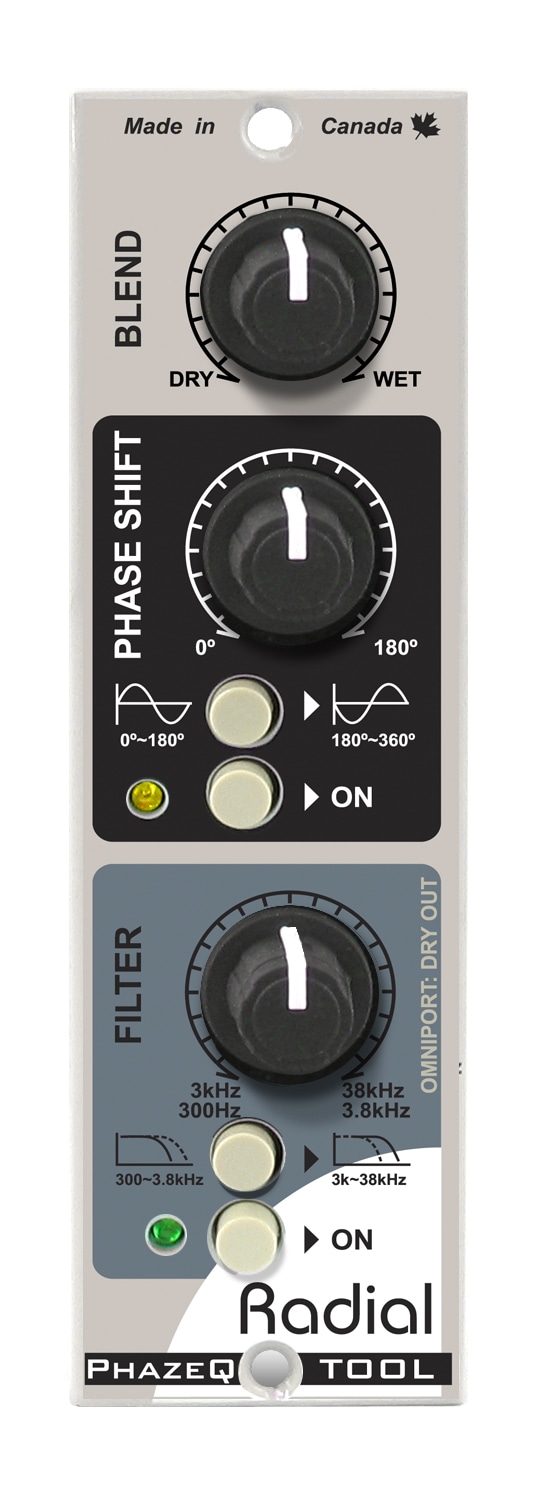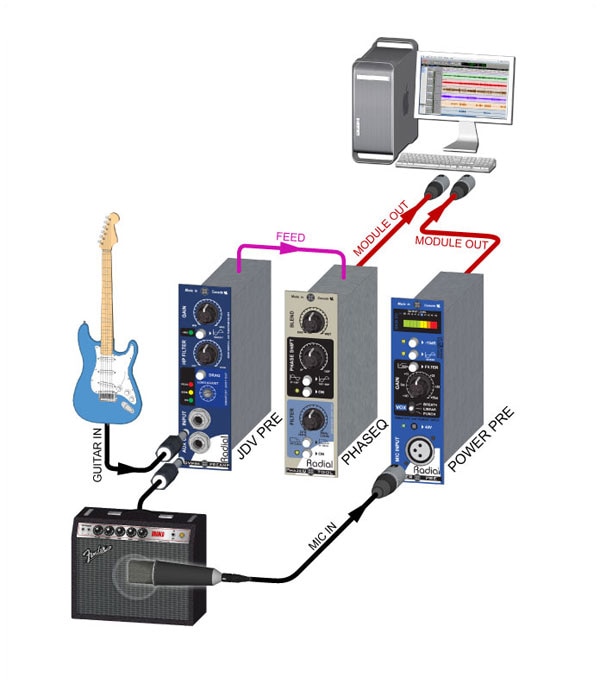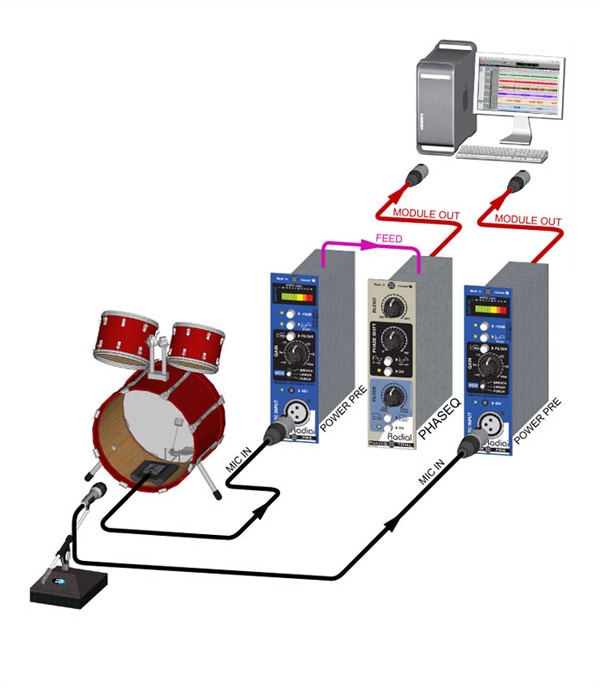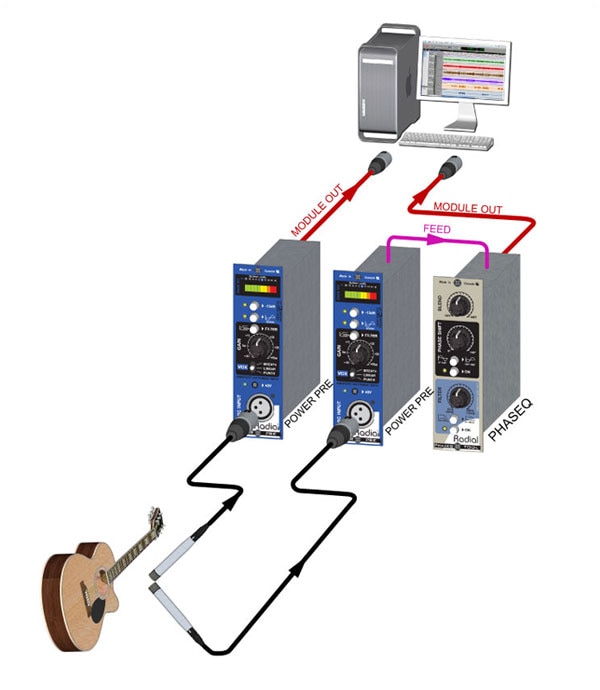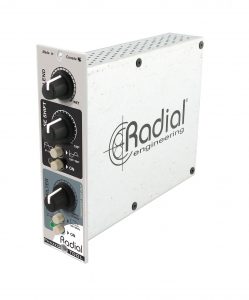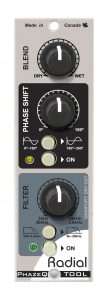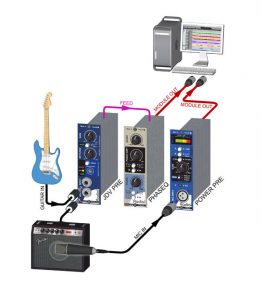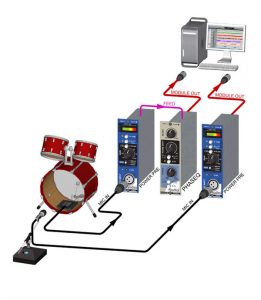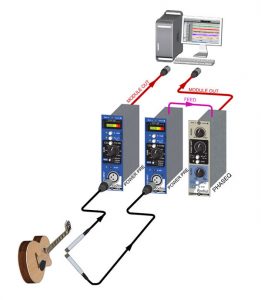The Radial PhazeQ is a device that must be listened to as the specifications truly mean very little. This is because each frequency has a different wavelength and properly phase-aligning all frequencies is impossible. In other words, as you bring one frequency in phase, the next will be shifted. So what specs are important? Noise, maybe the dry frequency response… maybe the smoothness of the phase curves. But beyond that, you will have to use your ears to judge how the PhazeQ works.
Specifications
Block Diagram
Graphs
| Specifications | ||
|---|---|---|
| Audio circuit type: | Discrete Component Class A | |
| Frequency response: | 20Hz~20KHz | |
| Dynamic range: | 102dB | |
| Total harmonic distortion: | Dry: >0.002% @1kHz (0dB input, 100k load) | Wet: >0.015% @1kHz (0dB input, 100k load) | |
| Intermodulation Distortion: | >0.015% @ -12dBu out | |
| Phase Deviation: | 0º ~ 180º - frequency dependent 181º ~360º when invert switch is engaged | |
| Input Impedance: | 3.4K Ohms | |
| Output Impedance: | 110 Ohms | |
| Noise: | Dry: -90dB below 0dBu | Wet: -80dB below 0dBu | |
| Maximum Output: | +17dBu | |
| Current Draw: | 50mA | |
| Features | ||
| 180° polarity reverse, LPF, OmniPort | ||
| Input Connectors: | XLR | |
| Output Connectors: | XLR | |
| General | ||
| Size (L x W x D): | 9 x 6.5 x 2 (inches) | |
| Weight: | 1.5 lbs. (0.7 kg) | |
| Conditions: | For use in dry locations only between 5°C and 40°C | |
| Warranty: | Radial 3-year, transferable | |

What do these graphs mean? Learn what to look for and why it matters.
Learn More
